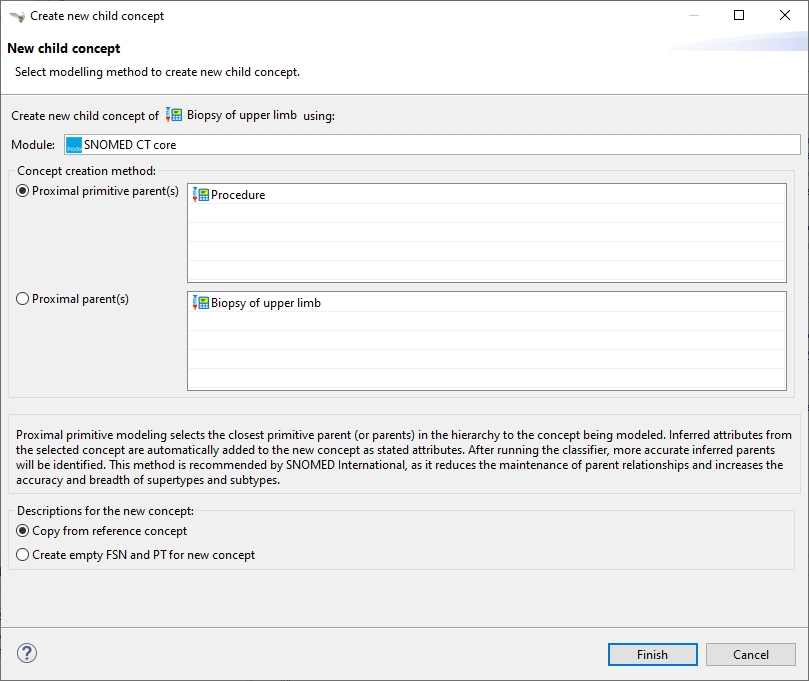Concept Creation
Snow Owl provides full support for a concept model, which dramatically simplifies editing.
Modeling method
Snow Owl enables selecting the preferred modeling method by using either the proximal parent or the proximal primitive supertype for concept authoring.
The Proximal primitive parent(s) model selects the closest primitive parent in the hierarchy to the concept being modeled. By using this modeling method, inferred attributes from the selected concept are automatically added to the new concept as stated attributes. After running the classifier, more accurate inferred parents will be identified.
The other modeling method is Proximal parent(s). Here, the direct parent is used regardless of its definition status. Attributes are not copied over to the new concept, as the classifier will inherit them as needed.
Both modeling options are available when creating a new child concept.

When creating a new sibling concept, the modeling options are not available. The defining Is a relationships of the selected sibling concept will be copied as stated properties.
Module selector
In the Create new child concept wizard, users can also specify the module of the new concept, and the descriptions and relationships that are added primarily when the concept is created.
The module field is auto-populated with the primary module. On the main branch, the primary module is the module selected in the ![]() Snomed CT Settings. On a task branch, it is the module that is firstly added to the task scope when the task is created. When a user is creating concepts on a task branch, only those modules are offered for selection in the module picker that are in the task's scope.
Snomed CT Settings. On a task branch, it is the module that is firstly added to the task scope when the task is created. When a user is creating concepts on a task branch, only those modules are offered for selection in the module picker that are in the task's scope.
After selecting the modeling method, the module, and finishing the wizard, the new concept's editor is displayed to allow modifications to the descriptions and attributes.